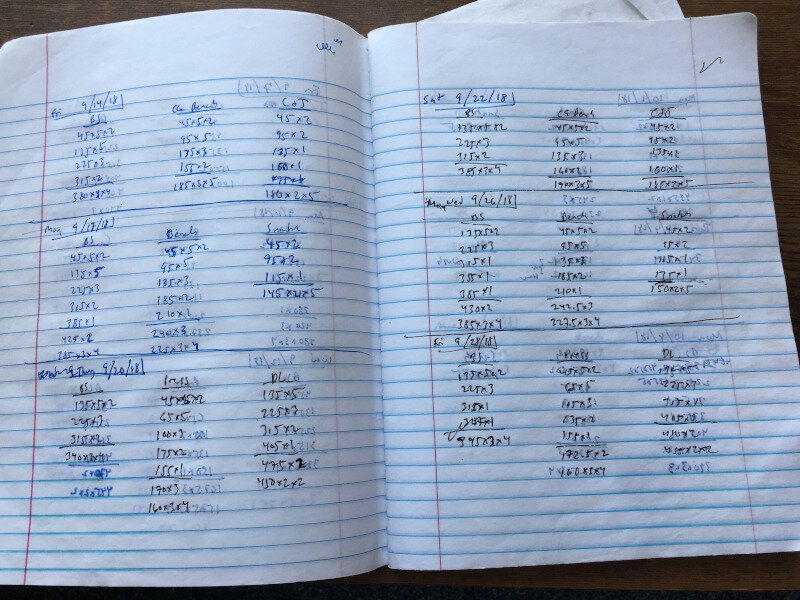Your Most Important Piece of Training Gear - Part 1 (Lifting Gear Series)
/Today, we're going to talk about your most important piece of training equipment. It’s not your belt, shoes, or wrist wraps - it’s not even the barbell or the squat rack. Your belt, shoes, and wraps can be easily replaced, and people train on different squat racks and with different barbells all the time. The one item that cannot be replaced - the one thing that is specific to you - is your training log.
In Part 1 of this mini-series, we’re discussing why the training log is important and why you should keep one, and in Part 2, we’ll cover how to set one up and correctly use it.
Be sure to check out the included videos as they also cover some additional material not included in this article.
This is the sixth article in our “Lifting Gear” series. Click below to read the previous articles in the series:
Exercise vs Training
Your training log is important since it’s specific to you, but it’s important for a number of other reasons as well. For starters, the training log separates exercise from training.
There’s nothing wrong with exercising, and it is certainly much better than doing nothing at all. However, exercising is what you do when you want to get hot, you want to get sweaty, you want to get tired, and you want to feel like you’ve accomplished something. Training, on the other hand, is what you do when you actually want to accomplish something, and that’s what we’re focused on.
Your Training History
Your training log is also important because it contains your history. As a result, it of course contains your lifts, warm-ups, work sets, etc., but it holds more than that. It tells you how training went on a given day - you can write down notes about your training sessions, and I encourage you to do precisely this. Notes such as “Today was a great day,” “Today was terrible,” or “185 for work sets felt awfully heavy!” are all examples of what you might write in your log.
Remember - someday 185 lb will just be a warm-up weight, and on that day, it will be very satisfying to look back and remember when 185 lb was a challenging work weight.
Your Training Compass
Because you train, you have a program and a plan. You have goals, and because your training log contains your history - i.e., where you’ve been - it also functions as your compass and helps guide you in the direction you want to go.
The log works as a compass in two ways - first, before you leave the gym each day, plan your next session. You want to walk into the gym for your next workout knowing what you’re going to hit for your work sets, so write all of that down before leaving the gym.
Second, the log functions as a compass because you’re going to write down your goals: “I want to squat 315 lb,” “I’m going to get my first chin-up this year,” or “I want to bench 225 lb at my next meet” are all solid examples of goals to write in your training log. These help guide you, motivate you, and make the process much more gratifying when you achieve these milestones.
Your training log is important - it separates training from merely exercising, it contains your history, and it’s your compass as you go forward. Next, it’s time to learn how to keep a log, so in Part 2, we’ll cover precisely how to go about setting up and utilizing your training log. In the meantime, we hope this helps you get stronger and live better.
(Some links may be affiliate links. As an Amazon Associate, Testify earns from qualifying purchases.)

